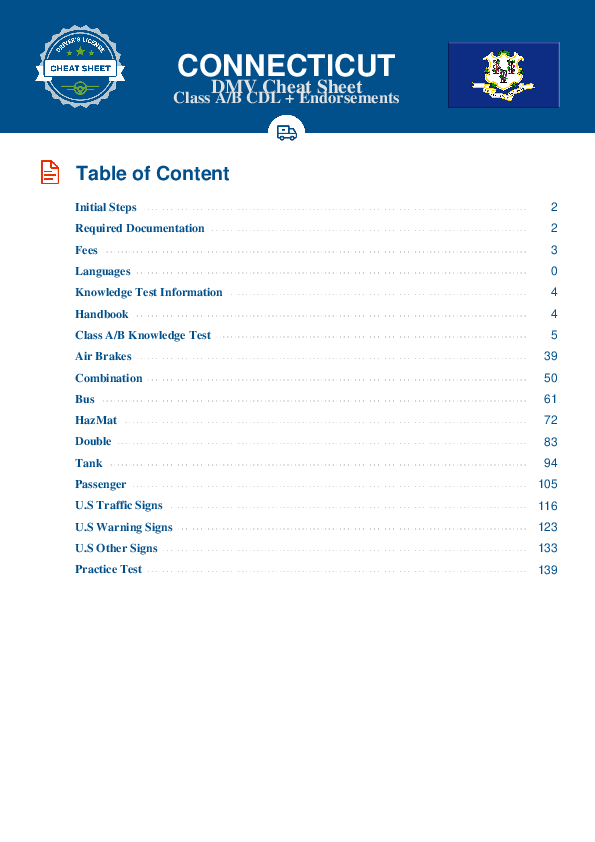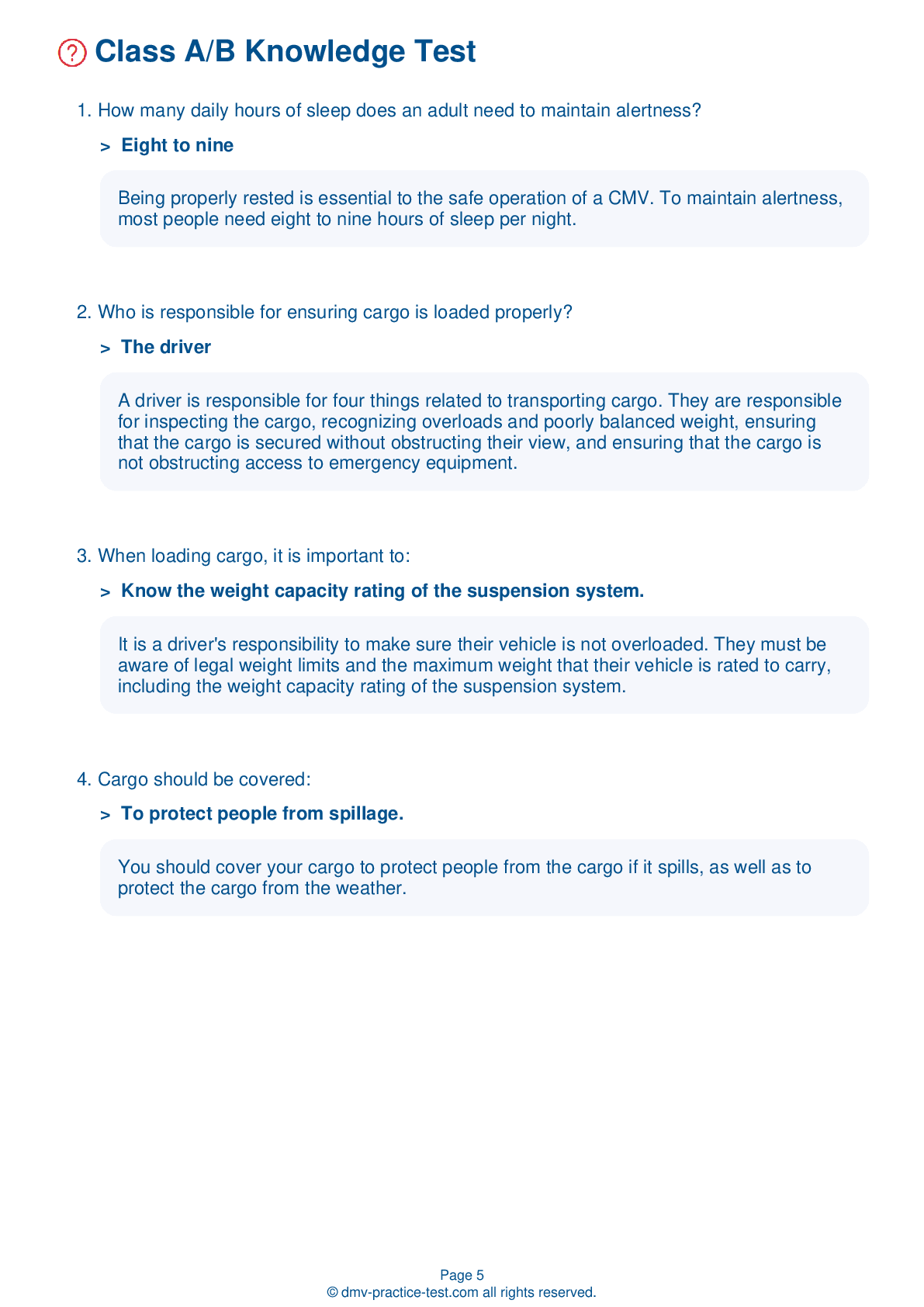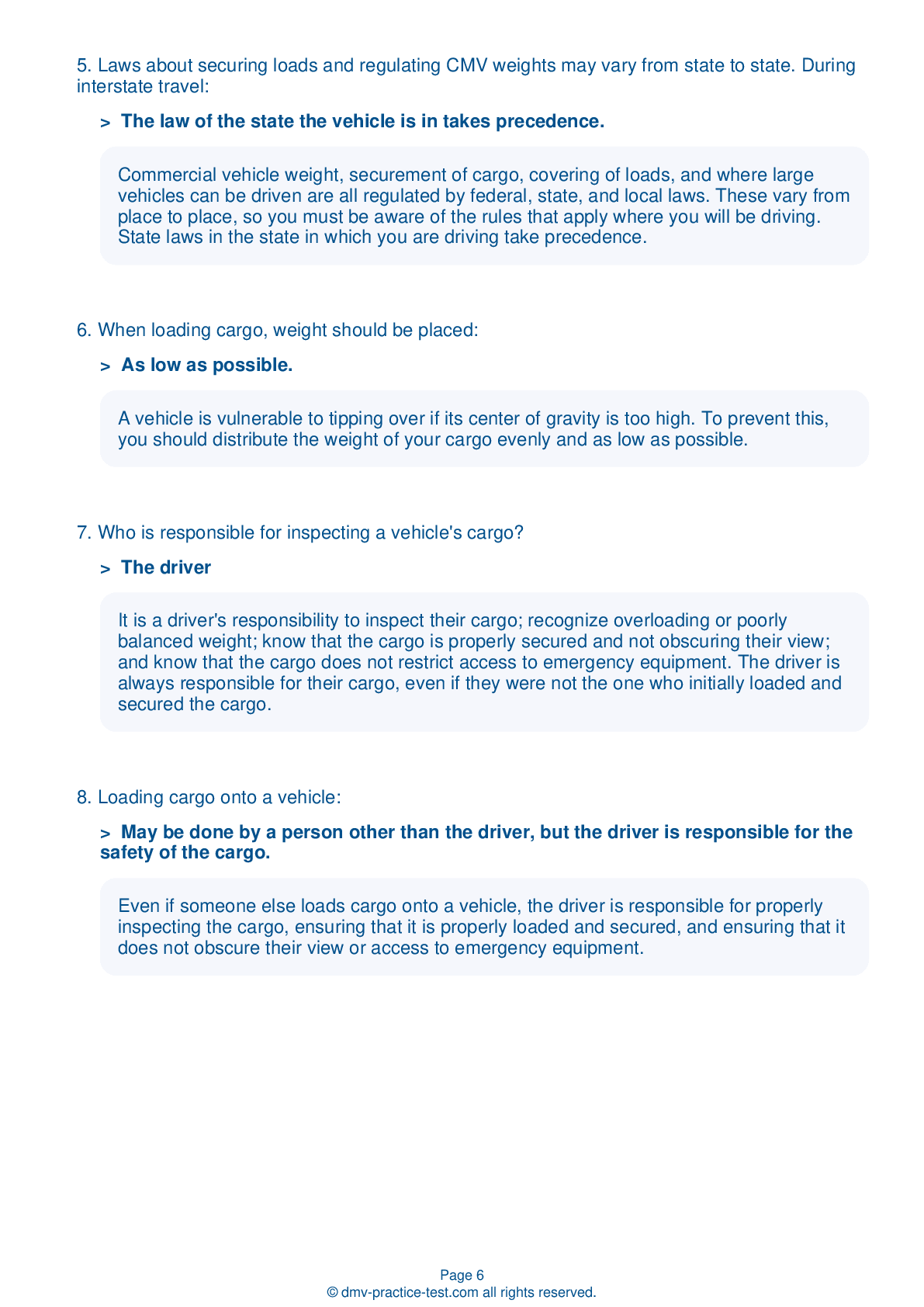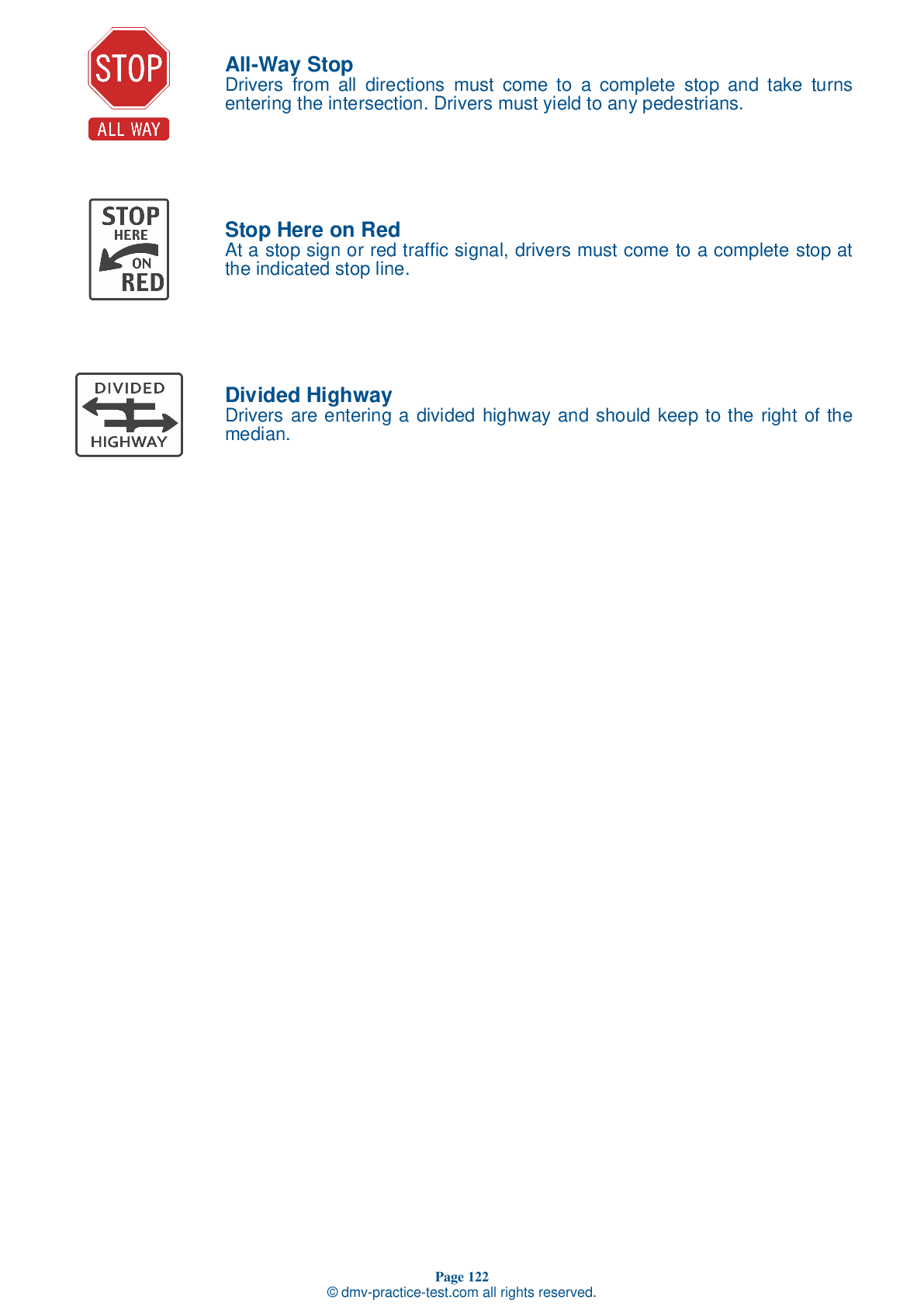Combination #2
Combination Vehicles Practice Test | Connecticut 2025 #2
Train for FREE online with our Connecticut CDL combination vehicle test. The official exam test consists of several obligatory parts, with all of them checking your knowledge of different blocks of road rules. If you need to obtain a CT combination license in 2025, practice as much as possible. Free sample tests published on our website will help you check and improve your knowledge and boost your grades. Please bear in mind that DMV requirements for issuing a combination license may vary from state to state.
20
16
20
1 . How much space should be between the upper and lower fifth wheel?
Before a trip, be sure to inspect all couplings. There should be no space between the upper and lower fifth wheel.
2 . Trailers with low underneath clearance can present challenges when driving over:
Railroad-highway crossings may be difficult to cross when pulling a trailer with a low underneath clearance. In particular, both low-slung units and single-axle tractors pulling long trailers are especially challenging to drive over raised crossings.
3 . When coupling a trailer:
When coupling, make sure you couple matching glad hands. They are often color-coded to help drivers avoid mistakes. Typically, blue is used for service lines and red is used for emergency lines.
4 . What is the tractor protection valve?
A tractor protection valve keeps air in a tractor or truck air brake system should the trailer break away or develop a bad leak. The valve will close automatically if the pressure drops to an unsafe level.
5 . Failure to keep the fifth wheel plate properly greased could:
Affect the lights.
Failure to keep the fifth wheel plate properly lubricated can create friction between the tractor and trailer, causing steering problems.
6 . One way to prevent a rollover is to:
Keep cargo as far from the ground as possible.
A rollover is more likely if cargo is unevenly loaded in a rig. To help prevent a dangerous rollover, it is important to keep a load as centered on the rig as possible.
7 . What happens when the wheels of a trailer lock up?
The trailer will stop.
A trailer tends to swing around, potentially resulting in a trailer jackknife, if its wheels lock up.
2025 Connecticut | Frequently Asked Questions
To acquire a CDL Passenger endorsement in Connecticut, you must first have a valid Connecticut CDL. Next, you must pass the Passenger Transport Test. You will need to study sections 2, 4, 5 and 12 of the CDL manual. After passing the test, you can apply for the endorsement at your local DMV office.
To obtain a CDL Passenger license in Connecticut, you must be at least 21 years old, possess a valid Connecticut CDL, and pass the Passenger Transport Test. This test covers topics like vehicle inspection, loading/unloading passengers, and emergency procedures. After passing the test, you apply for the endorsement at your local DMV office.
Yes, specific training is needed for a CDL Passenger endorsement in Connecticut. This includes passing a general knowledge test, a passenger transport test, and a skills test in the vehicle type you'll be driving. While not mandatory, experience driving large vehicles can be beneficial as it may help you pass these tests.
Yes, to secure a CDL Passenger endorsement in Connecticut, you must pass the Passenger Transport Test. This written test covers topics such as inspecting your vehicle, loading and unloading passengers, on-road driving, and emergency procedures. You'll need to study sections 2, 4, 5 and 12 of the CDL manual to prepare for it.
During the CDL Passenger endorsement assessment, you'll need to demonstrate skills like vehicle inspection, proper passenger loading/unloading, safe operation of the vehicle, use of emergency exits, and executing proper responses to emergency situations. The aim is to ensure you can safely transport passengers under various conditions.
No, in Connecticut, you cannot legally transport passengers in a commercial vehicle without a valid CDL Passenger endorsement. This endorsement is required for drivers of vehicles designed to carry 16 or more passengers, including the driver. Driving without the proper endorsement can lead to penalties, fines, or suspension of your CDL.
Yes, you can add the CDL Passenger endorsement to your existing Commercial Driver's License (CDL). You do not need to apply for a new license. However, you will need to pass the Passenger Transport Test and a skills test in the vehicle type you will be driving. Consult your local DMV for specific procedures.
Yes, there are restrictions for drivers with a CDL Passenger endorsement in Connecticut. They must comply with federal and state regulations regarding hours of service, not drive under the influence of alcohol or drugs, and must maintain a clean driving record. Additionally, they must ensure passenger safety and comply with vehicle capacity limits. Failure to adhere to these can lead to penalties or suspension of the endorsement.
Yes, in Connecticut, to acquire a CDL Passenger endorsement, you must be at least 21 years old. This is a federal requirement to drive a commercial vehicle across state lines. However, if you plan to operate only within Connecticut, you can get a CDL at age 18. Always remember to check with your local DMV for the most accurate information.
With a CDL Passenger endorsement in Connecticut, you are eligible to operate vehicles that are designed to transport 16 or more passengers, including the driver. This includes buses, shuttle vans, and large limousines. However, school buses require an additional School Bus endorsement. Always ensure you have the correct endorsements for the vehicle you're operating.



